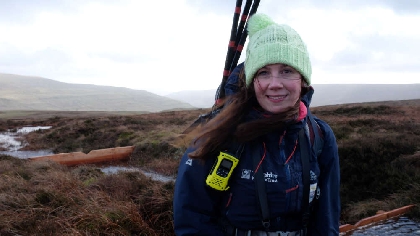
A once badly damaged, National Trust-owned peatland high up on the old West Riding/North Riding boundary is showing clear signs of healing, as contractors begin a fresh round of major restoration work.
Twelve years ago Cray Moss, located in the centre of the National Park, became one of Yorkshire Peat Partnership’s first restoration sites.
Over the course of many monitoring visits, including one at the end of January, Peat Project Manager Tessa Levens (pictured) has gathered evidence showing that large, bare patches of eroding peat have successfully re-vegetated with peat-producing sphagnum mosses.
The monitoring has led to a fresh programme of restoration work on Cray Moss, to fix any remaining bare peat. The programme will see work extend into neighbouring peatlands, Chapel Moor and Yockenthwaite Moor.
Yorkshire Peat Partnership (YPP), which includes the National Park Authority and this year celebrates its 15th year of operation, is using money from the government’s Nature for Climate Peatland Capital Grant Scheme to pay for the works. Its contractors on Cray Moss, Dinsdale Moorland Specialists, are using the latest ‘leaky dam’ designs and re-profiling techniques in order to trap peat sediment and slow the flow of water from the moor.
In its latest annual report, YPP said there were nearly 41,000 hectares of peatland in the Yorkshire part of the Yorkshire Dales National Park – covering about 20% of the National Park area (**see Note to Newsdesk, below). Of this, initial peat restoration works have taken place on more than 23,000 hectares since YPP was established in 2009, meaning that the partnership is about halfway through the mammoth task of restoring the National Park’s peatlands.
Tessa Levens said: “We did the first phase of work on Cray Moss in 2011/12 and now we’re back to fix any gaps. It makes me quite emotional, coming back and seeing that what was done a decade ago is working. There were lots of hags and gullies and bare peat. It was densely eroded. Now, where there was lifeless, bare peat, there are sphagnum mosses, grasses and sundew. It’s like a lava flow of moss has come over bare ground.”
She said as well as carbon sequestration and flood mitigation, the benefits of the peatland restoration for biodiversity were also apparent
“I have seen lots of emperor moth caterpillars when I’ve done surveys over the years, but here on Cray Moss – in the past year – I’ve seen the moths themselves for the first time. We’ve seen short-eared owls most days we’ve been up here; the contractors have seen hen harriers; and there are all the crane flies which will keep the waders – the lapwings and plovers – going when they arrive soon.”
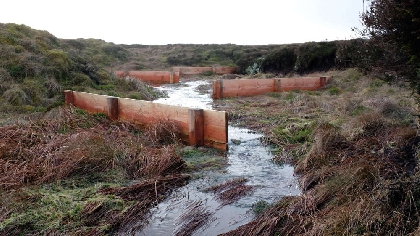
Picture: New peatland restoration interventions such as 'baffle boards', to keep water from washing away the edges of peat hags, have been used on Cray Moss.
Shelley Rhodes, the National Trust’s Local Coordinator for Peatland Restoration, said: “The work at Cray Moss is a model for what other peatlands should look like in the near future. The National Trust has ambitious targets to create or restore 25,000 hectares of new priority habitat by 2025 as part of our wider target to be carbon net zero by 2030, but we’re equally focussed on securing a truly sustainable future for our tenant farmers in the Yorkshire Dales too.
“Increasing resilience to more extreme weather conditions – as we’ve done at Cray Moss – is of great benefit to everyone, and replacing bare peat on our fells with thriving habitats will help ensure that the Dales are hydrologically stable and bursting with biodiversity for generations to come.
“We’re particularly pleased to have worked closely with Yorkshire Peat Partnership, the National Park Authority, longstanding tenants, and specialist local contractors, who all have the shared passion and expertise to create a better, more sustainable environment in this much-loved part of the world.”
Mark Corner, Member Champion for the Natural Environment at the Yorkshire Dales National Park Authority, said: “Blanket bog such as found at Cray Moss holds a nationally significant store of carbon and it is very good news to see that restoration efforts are working – just as they are at nearby Fleet Moss.
“Degraded peatlands exacerbate flooding events down dale and add greenhouse gases to the atmosphere, contributing to the warming of the climate. We must keep scaling up peatland restoration efforts, as the sooner we can restore the bogs, the greater the rewards will be for people and nature.”


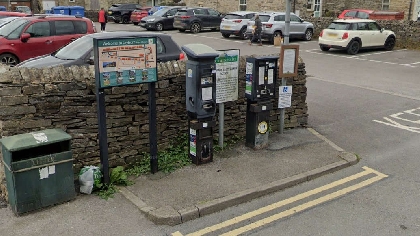 Council chiefs agree record £2.5m investment in car parks
Council chiefs agree record £2.5m investment in car parks
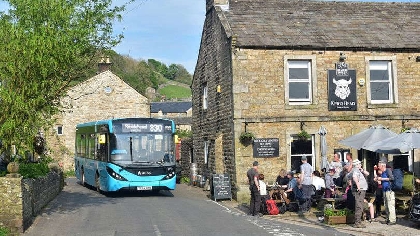 Summer bus services in the Dales extended
Summer bus services in the Dales extended
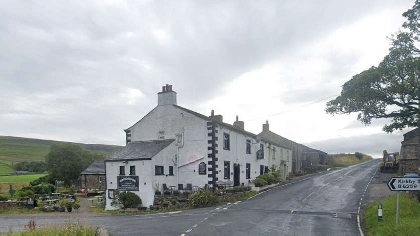 Dales pub landlady loses enforcement notice appeal
Dales pub landlady loses enforcement notice appeal
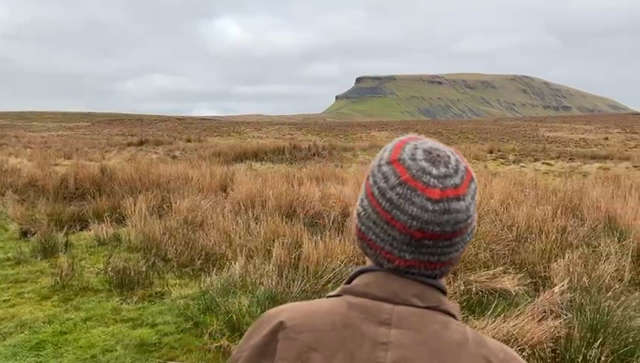 Ex-National Park head and son pay tribute to Pennine Way in song
Ex-National Park head and son pay tribute to Pennine Way in song
 A PRESSING engagement at Gallery on the Green
A PRESSING engagement at Gallery on the Green
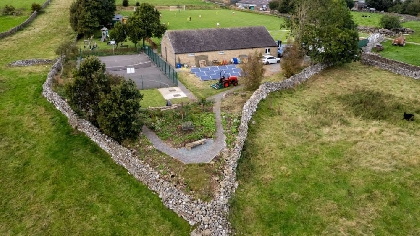 Dales pavilion featured in TV advert becomes thriving hub
Dales pavilion featured in TV advert becomes thriving hub
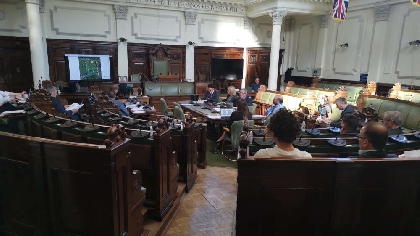 Planners refuse Richmond housing development
Planners refuse Richmond housing development
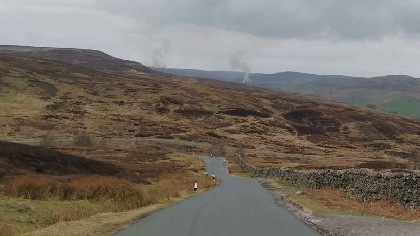 Wider ban on heather burning ‘risks catastrophic wildfires’
Wider ban on heather burning ‘risks catastrophic wildfires’
Comments
Add a comment